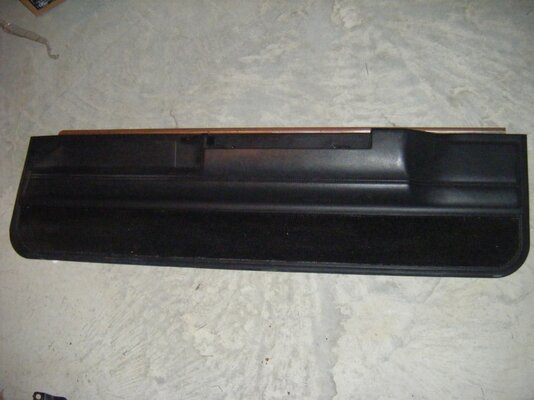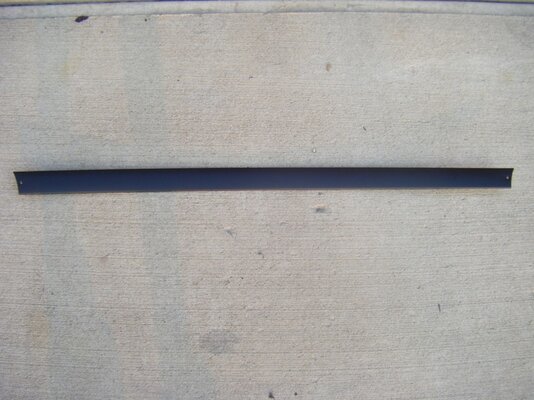I feel ya. I was thinking of having the pumps turn on when activating the exhaust or running a separate switch. I think it would be better to have it ran to turn on with the exhaust. Oil pumps will be hooked up to a buzzer so if I lose voltage to them I know the are working and to pull my butt over or switch to normal exhaust.
Twin Turbo Idea(Remote Activated Turbo)
- Thread starter kingcolbert83
- Start date
You are using an out of date browser. It may not display this or other websites correctly.
You should upgrade or use an alternative browser.
You should upgrade or use an alternative browser.
- Status
- Not open for further replies.
I feel ya. I was thinking of having the pumps turn on when activating the exhaust or running a separate switch. I think it would be better to have it ran to turn on with the exhaust like you stated. Oil pumps will be hooked up to a buzzer so if I lose voltage to them I know they aren't working and to pull my butt over or switch to normal exhaust.(or both)
okay guys, I need some explainin. I understand single turbos just fine and how everything works, but what's so different about a twin turbo? I ask because I heard from a guy at a well known turbo/ s/c shop around here that twin turbos of the same size need to be set up perfectly to work together, etc etc. Is it because there's one turbo for each manifold? I know some tt's are set up with a smaller and a larger to accomodate for boost lag. I was confused, shed some light on that please.
custom442 said:okay guys, I need some explainin. I understand single turbos just fine and how everything works, but what's so different about a twin turbo? I ask because I heard from a guy at a well known turbo/ s/c shop around here that twin turbos of the same size need to be set up perfectly to work together, etc etc. Is it because there's one turbo for each manifold? I know some tt's are set up with a smaller and a larger to accomodate for boost lag. I was confused, shed some light on that please.
Not sure. I assumed they worked the same as a single but instead of having the exhaust running through one you got a turbo for each cylinder side. Im guessing since its setup like that it has to be right so things dont get messed up. I can see the damage if one turbo boost at one rpm and the other boost at another rpm but what would be the difference between that and somebody who runs a supercharger and nitrous. hmm... turbo guys where are you.
The twins were talking about would be fed by each bank of the motor than ran into a single tube, then you carb or throttle body. they would be the same size. The other way of using a small and large turbo is all the exhaust feeds the small turbo then the already compressed air from the feeds the larger one then onto the carb o rthrottle body or i/c.
I hope that helps, i'm by no means an expert on this.
I hope that helps, i'm by no means an expert on this.
yea i really dont see the problem where he said the guy said the had to be set up perfectly. If you got a shitty engine to start with then yea things arent going to work right but as far as a rebuilt engine I see no problems because the turbos arent going to spool until a certain time anyway and if they dont spool at the same time Im guessing its not enough where you would be able to tell.
The cut-out system that you describes will only add a ton of complexity without adding any real benefit. Turbo motors don't build boost unless the motor is under load, so while cruising you get the same mileage as you would with no turbo at all.
The problem with a remote mount turbo would be if you have a leak on either the exhaust side or cold side, it will be much more difficult to diagnose.
If it were me I would keep it simple. While not perfect, people have had good luck with the $200 ebay single turbo manifold setups. Buy a good quality turbo, and decide if you want to go the carb or efi route. With EFI you can use megasquirt to control fuel injector pulse width. A carb would probably be easier and cheaper, but you lose the ability to fine tune your system like you would with efi.
The problem with a remote mount turbo would be if you have a leak on either the exhaust side or cold side, it will be much more difficult to diagnose.
If it were me I would keep it simple. While not perfect, people have had good luck with the $200 ebay single turbo manifold setups. Buy a good quality turbo, and decide if you want to go the carb or efi route. With EFI you can use megasquirt to control fuel injector pulse width. A carb would probably be easier and cheaper, but you lose the ability to fine tune your system like you would with efi.
Attachments
The smaller turbo feeding the larger turbo is more commonly referred to as a sequential turbo setup. You most commonly find these on the 1jz and 2jz twin turbo supra engines, and some diesel engines employ them as well. . You can have different size turbos on each side of a v engine. If you were to have a smaller quicker spooling turbo on one side and a bigger more powerful turbo on the other, the smaller turbo would come onto boost faster and enable its boost pressures and increased engine power to spool up the bigger turbo faster. (Some people run extremely large turbos and need a really large, high compression ratio engine and/or nitrous to get the engine spinning fast enough for the exhaust to spin the turbo fast enough to make up for the lag). The bigger turbo's boost pressure would eventually overlap and take over the engine's demand. There would be no harmful effect on the engine as all the compressed air is going into the intake at the same point regardless of which turbo comes on boost first. In other words, the turbos themselves do not exert a mechanical force on the internal components. For a 305, I would go with something like two 20G mitsubishi turbos. Hell, two 16G turbos would work well too. Those turbos are common upgrades for the turbo eclipses and evos. You can find them on some other vehicles as well, but they were more common on these. The 16G was designed for a 2.0l engine and was rated at a higher power level than the stock turbo on the eclipses. So two of them should fair very well on a 5.0l engine. Even better would be the 20g turbo, as it makes really big numbers on that 2.0l engine but suffered from lag due to the smallish 2.0l displacement. It would probably be a fair compromise between lag and power on a bigger 5.0l engine
turbo's already have cutout's. they're called wastegates. if (modern systems) the ECM doesn't need the extra boost, it opens the waste gate and the exhaust bypasses the impeller.
most, if not all, have a variable wastegate to modulate the amount of boost being delivered.
twin turbo's feeding their individual bank have to be precisely matched and tuned so the banks are running the same, EXACTLY the same.
if the turbo's are feeding into a common plenum it's much easier. i think you'd just have to worry about having the exhaust restrictions match at all times. i'd probably try to use a common wastegate actuation system.
most, if not all, have a variable wastegate to modulate the amount of boost being delivered.
twin turbo's feeding their individual bank have to be precisely matched and tuned so the banks are running the same, EXACTLY the same.
if the turbo's are feeding into a common plenum it's much easier. i think you'd just have to worry about having the exhaust restrictions match at all times. i'd probably try to use a common wastegate actuation system.
87National said:The cut-out system that you describes will only add a ton of complexity without adding any real benefit. Turbo motors don't build boost unless the motor is under load, so while cruising you get the same mileage as you would with no turbo at all.
The problem with a remote mount turbo would be if you have a leak on either the exhaust side or cold side, it will be much more difficult to diagnose.
If it were me I would keep it simple. While not perfect, people have had good luck with the $200 ebay single turbo manifold setups. Buy a good quality turbo, and decide if you want to go the carb or efi route. With EFI you can use megasquirt to control fuel injector pulse width. A carb would probably be easier and cheaper, but you lose the ability to fine tune your system like you would with efi.
Would it really be that complicated? Im only adding the electric exhaust cutout and running a downpipe on one side for the regular exhaust . The other side would be to the turbo piping. If I do any turbo it will be twin. I just like the sound of it I guess. 🙂
Attachments
- Status
- Not open for further replies.
Similar threads
- Replies
- 122
- Views
- 11K
- Replies
- 1
- Views
- 216
- Replies
- 6
- Views
- 602
GBodyForum is a participant in the Amazon Services LLC Associates Program, an affiliate advertising program designed to provide a means for sites to earn advertising fees by advertising and linking to amazon.com. Amazon, the Amazon logo, AmazonSupply, and the AmazonSupply logo are trademarks of Amazon.com, Inc. or its affiliates.




